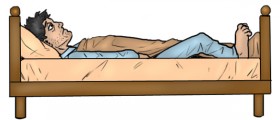About Ferritin
Ferritin is one of the proteins present in the body. One of its main functions is to store the iron coming from the food. In free form, iron is toxic for the body but when ferritin stores it, it is perfectly safe.
Blood tests done in regular check-ups at the doctor’s usually include ferritin levels. Low ferritin levels are a medical problem which needs to be addressed. Ideally, the range of serum ferritin should be 30-400 ng/ml for men and 13-150 ng/ml for women. Anything below that is called low ferritin.
As for the reasons for low ferritin levels, there are several conditions that can cause them. Hypothyroidism is one of those medical conditions, as well as diseases that affect the digestive tract and reduce the absorption of iron.

- Iron therapy should be monitored with repeated ferritin determinations with a target ferritin concentration of >100 ?g/L and carried out until symptoms have resolved. When iron treatment is discontinued, the serum ferritin should be determined to ensure that the level remains stable. Iron should be reinstituted if the ferritin concentration drops and symptoms reappear.
- Iron deficiency anemia (hemoglobin ? 130 g/L in males and ?120 g/L in females) is a late manifestation of iron deficiency, both of which are common medical conditions in everyday clinical practice.
- Some 10–20% of menstruating women have iron deficiency, and 3–5% of them are frankly anemic.
- Iron deficiency (anemia) may often be asymptomatic and go undiagnosed for a long period of time. Blood is frequently drawn for a full blood count and if microcytic/hypochromic anemia is present, iron deficiency may be suspected. The serum ferritin concentration (cut off
Symptoms of Low Ferritin Levels
Low ferritin levels cause symptoms that resemble anemia and restless leg syndrome but they usually depend on the exact underlying cause. The most common symptom, however, is the iron deficiency anemia. This includes excessive tiredness, fatigue, sleepiness, low energy levels and poor stamina, mental exhaustion, headache, paleness and similar. These symptoms occur because when the iron is low, hemoglobin and hematocrit are also low and the oxygen supply to the cells is decreased. Other symptoms may include brittle nails, hair fall, dry and flaky skin, irritability, shortness of breath even during mild physical activity, and, in case of very low ferritin levels, dizziness, confusion, problems with memory and focus and difficulty swallowing.
Leg cramps and restless leg syndrome are also commonly associated with low ferritin levels. Restless leg syndrome is a condition in which, due to different types of discomfort, a person has an irresistible urge to move, jerk or shake the legs. People who suffer from restless leg syndrome are usually advised to have their ferritin levels checked because they are often the cause of this problem.
In case of low ferritin levels caused by hypothyroidism, there will be other symptoms as well, such as lethargy, drowsiness, slow metabolism, weight gain and others.
A person who has low ferritin levels due to malabsorption syndrome will have low levels of other nutrients as well, especially minerals and vitamins.
Low ferritin levels can be a short-term problem that goes away soon without exhibiting serious symptoms. A person can have slightly lower ferritin levels and not know about it, because it may not necessarily cause the symptoms mentioned above. However, if the symptoms are present and if they range from moderate to severe, it is very important to check the iron status and the serum ferritin and take action to fix them.

















Your thoughts on this
Loading...